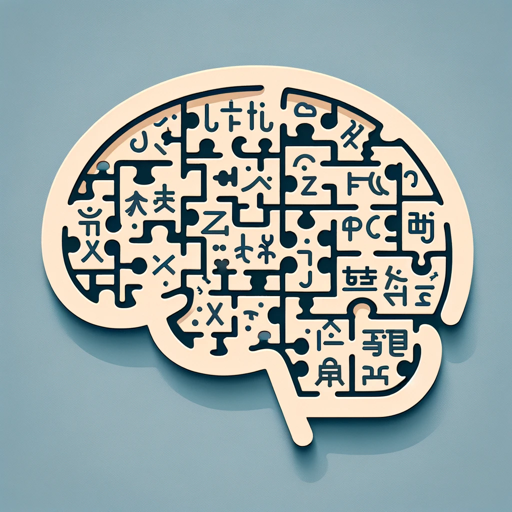Phonetics and Phonology-AI-driven phonetics and phonology analysis.
AI-powered phonetic and phonological analysis tool.
Explain the vowel quadrilateral.
Differentiate between phoneme and allophone.
Discuss intonation in connected speech.
Analyze a spectrogram.
Related Tools
Load More
NLP Computational Linguistics Expert
Expert in NLP and computational linguistics.

Linguistics Insight
Expert in linguistics, focusing on theories, syntax, and semantics.

Phalorion Elevenlabs TTS
Expert in Voice Synthesis using Eleven Labs API Offers free AI & TTS solutions. Link becomes available usually 5-15 min if not immediate. Stays live 24 hr. ChatGPT4 integrated with Elevenlabs. Full Multilingual. KEEP TRYING LINK COPY PASTE

Learn English by Pronunciation
Learn English by Pronunciation

Rah Mat
Linguistic expert and meta research companion. Rah Mat, a unique AI, merges linguistics and bioinformatics, analyzes phonemes in WORDS using DNA alignment techniques. Rah Mat reveals deep universal root meanings hidden in our Q-1-tum language matrix.

Linguistics Bot
Helping students to learn linguistics. (Derivative of bit.ly/3S8a3Eo and bit.ly/3vFD6X4 via CC BY-SA 4.0 and bit.ly/3tNvDVB via CC BY.)
20.0 / 5 (200 votes)
Introduction to Phonetics and Phonology
Phonetics and Phonology are two closely related subfields of linguistics that focus on the study of speech sounds. Phonetics is concerned with the physical aspects of speech sounds: their production, acoustic properties, and auditory perception. It answers questions like how sounds are articulated by the vocal apparatus, how they travel as sound waves, and how they are perceived by the ear and brain. Phonology, on the other hand, deals with the abstract, cognitive aspects of sounds: how they function within particular languages, how they pattern together, and how they contribute to meaning. Phonology examines the rules and systems that govern how sounds combine, vary, and change in different linguistic environments. For example, while phonetics would describe the acoustic differences between the English sounds [p] and [b], phonology would explain why [p] and [b] can distinguish meaning in English (as in 'pat' vs. 'bat') but might not serve the same function in another language.

Main Functions of Phonetics and Phonology
Articulatory Analysis
Example
A linguist studying how different dialects of English pronounce the 'r' sound.
Scenario
In sociolinguistics, researchers might analyze how the 'r' is pronounced differently in American and British English. Phonetics allows them to measure the precise movements of the tongue and lips, while phonology helps explain why certain pronunciations are more common in some dialects than others.
Acoustic Analysis
Example
Using spectrograms to analyze the frequency and amplitude of speech sounds.
Scenario
In forensic linguistics, an expert might use acoustic phonetics to analyze a voice recording, comparing its spectral characteristics to identify or exclude a suspect based on the voiceprint.
Phonological Patterning
Example
Understanding why 't' is aspirated in 'top' but not in 'stop'.
Scenario
In language teaching, instructors might explain to students how certain phonological rules affect pronunciation, such as the aspiration of voiceless stops in English. This knowledge helps learners achieve more native-like pronunciation by understanding underlying patterns.
Ideal Users of Phonetics and Phonology Services
Linguists and Researchers
Academics who study language structure and use benefit from phonetic and phonological analysis to understand sound systems across different languages, track sound changes over time, and analyze language acquisition in children and adults.
Language Educators and Learners
Teachers and students of languages, particularly those involved in pronunciation training, can use phonetic and phonological insights to improve pronunciation, understand sound distinctions in different languages, and develop more effective teaching methods.

How to Use Phonetics and Phonology
Visit aichatonline.org for a free trial without login
Start by visiting aichatonline.org, where you can access the Phonetics and Phonology tool without needing to log in. The free trial is available to everyone, with no requirement for ChatGPT Plus.
Explore the Tool's Interface
Familiarize yourself with the user interface, which is designed for ease of use. Navigate through various sections, such as phonetic transcription, phonological analysis, and the study of sound patterns.
Input or Select Linguistic Data
You can either input your own linguistic data for analysis or select from pre-existing datasets. The tool is versatile, supporting both individual sounds and complex phonological structures.
Perform Analysis
Utilize the tool's powerful algorithms to conduct in-depth phonetic and phonological analysis. Whether you're working on segmental features, suprasegmental features, or phonotactics, the tool provides detailed insights.
Interpret Results and Apply
Review the results, which are presented in a clear and detailed format. Apply the insights to your research, academic writing, or teaching. The tool's outputs are designed to be directly usable in scholarly work.
Try other advanced and practical GPTs
UiUx Guru
AI-Driven UI/UX Design, Simplified

Matthew Mercer GPT
Elevate your storytelling with AI-powered creativity.

Oracle SQL
AI-Powered Oracle SQL Assistant

TOEIC Tutor
AI-powered TOEIC practice and feedback

Business Mentor
AI-powered business guidance

Investigador Fiable
AI-powered research for credible information

Specialty Coffee Sommelier by Lux Cafe Club
Discover Your Perfect Coffee Match

Tech Expert
AI-powered Technical Assistance

Voice Reader
AI-powered text reader for seamless listening.

Comic Books GPT
AI-powered comic book encyclopedia

Cell Biology Guide
AI-powered insights into cell biology.

Sanjay
Elevate your Flutter development with AI-powered best practices.

- Research
- Learning
- Analysis
- Teaching
- Linguistics
Q&A: Understanding Phonetics and Phonology
What is the difference between phonetics and phonology?
Phonetics is the study of the physical sounds of human speech, focusing on their production, acoustic properties, and perception. Phonology, on the other hand, examines how those sounds function within a particular language or languages, including the rules governing their combination and pronunciation.
How can this tool assist in academic research?
This tool facilitates rigorous phonetic and phonological analysis, providing detailed outputs that can support your academic research. It helps in analyzing sound patterns, testing phonological theories, and offering data that can be used in scholarly publications.
Can I use the tool for teaching purposes?
Yes, the tool is ideal for educational settings. It can be used to demonstrate phonetic transcription, illustrate phonological rules, and help students understand complex sound patterns. The visual and interactive elements enhance learning and engagement.
Does the tool support multiple languages?
Yes, the tool is designed to support a wide range of languages. It allows for the analysis of language-specific phonetic and phonological features, making it versatile for both teaching and research in various linguistic contexts.
What kind of data can I analyze with this tool?
The tool can analyze various types of linguistic data, including speech recordings, phonetic transcriptions, and abstract phonological representations. It supports analysis at different levels, from individual sounds to complex phonological systems.